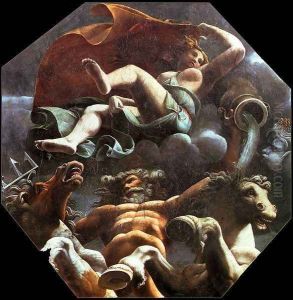Rinaldo Mantovano Paintings
Rinaldo Mantovano, born in 1490, was an Italian artist whose contributions to the Renaissance period, although not as widely recognized as those of his contemporaries, still hold significance in the study of art history. His moniker, 'Mantovano', suggests his connection to Mantua, a city known for its vibrant artistic scene during the Renaissance. While there is limited documentation on his early life, it is believed that Mantovano was involved in the bustling network of artists, patrons, and scholars that characterized Mantua at the time.
Mantovano's work is characterized by its adherence to the principles of the High Renaissance, emphasizing balance, harmony, and the idealization of the human figure. His style was influenced by the works of more prominent artists of his time, such as Raphael and Giulio Romano, especially in his use of color and composition. However, Mantovano managed to carve out his own niche, focusing on religious themes and portraiture, which were popular among the patrons of Mantua.
Despite his contributions, Rinaldo Mantovano remains a somewhat obscure figure in the annals of art history, overshadowed by the giants of the Renaissance. His death in 1534 marked the end of a career that, while not as celebrated as those of his peers, contributed to the rich tapestry of Renaissance art. Today, scholars continue to study his works, hoping to shed more light on his artistic legacy and the broader context of Mantuan art during the Renaissance.
